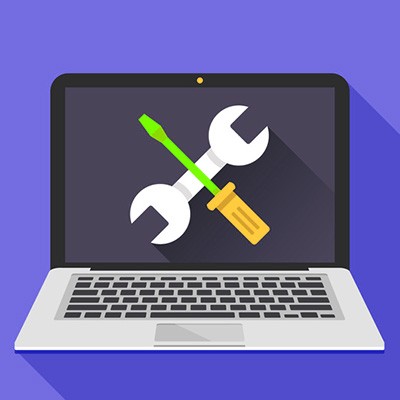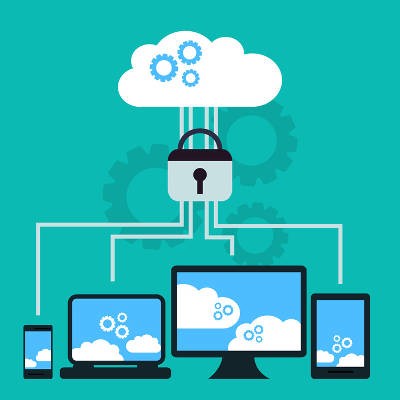If machine learning is one of those technologies that you keep hearing about, but don’t quite know exactly what it is, you aren’t alone. Most people only know that it has something to do with A.I. Some of the most successful businesses in the world are using machine learning, and its artificially intelligent capabilities to improve their offering or effectiveness. Today, we will begin to explain what exactly machine learning is and how it is beginning to work for businesses just like yours.
Argentum IT LLC Blog
Chances are that you’ve dealt with the following scenario: You are working along fine and you try to open an application only to be rebuked by an error message on the screen that tells you that there is some type of critical error. You close that out hoping that it was a one-time exception, but nope, it pops up again. You think to yourself, “Why does this always happen?”
A technology roadmap is a key asset to use when planning your business for the near future. IT is volatile and demands that you always think ahead, so if you want to make sure technology doesn’t become a major pain point for your organization, it’s best to start thinking ahead. We’re here to help you get started thinking about how your business technology should change and adapt over the course of 2019.
Chances are if you are in business today, there are a lot of devices on your network that you haven’t touched in years, might not be using, or don’t even need. Unfortunately, there are times when the technology you have doesn’t really do much other than take up space. If you feel like you are spending too much on your technology, you may not be wrong. By finding the IT that helps your business do business better, and scrapping plans for implementing technology that doesn’t provide sustainable returns may be a good strategy.
Your operations are, more or less, contingent on your budget. As such, your business will rely on its budget to guide it fiscally through the next year of operation. Unfortunately, IT resources care little about your budget, and you can see this in how unpredictable it can be. We’ll discuss ways that you can keep your IT budget from breaking the bank, as well as how you can improve success over time through proper management of your IT assets.
Technology helps businesses of all kinds keep their operations running soundly, but depending on the way that it’s managed, it could have detrimental effects on your company. For example, if you have all kinds of solutions hosted on specific servers or workstations, you’re keeping them from being accessed by devices that aren’t connected to that specific network. Wouldn’t it be better if everything was centralized so that all of it could be accessed at a glance?
Security is a part of business that is constantly changing and evolving. What worked ten years, five years, or even two years ago may not be relevant in today’s security environment. What are some of the major changes that your company can expect to see in the coming years? We’ll walk you through some of the ways that security will be changing in the foreseeable future, and what you can do about it.
As 2018 progresses, certain technologies and implementations are becoming more prominently used by businesses. These trends are anticipated to continue, so it only makes sense to embrace these technologies sooner rather than later. Today, we’ll review some of these technologies, why they are expected to grow, and how you can use them to benefit your business operations.
The variety of malware known as ransomware exploded in popularity in 2016, encrypting victims’ files and demanding cryptocurrency payments to restore the data to the estimated tune of $1 billion. This may seem to suggest that large corporations and companies are the primary targets of these cyber criminals--and for some, they are.
As a business, your clients trust that you’re taking every measure possible to protect data, like personal information or financial records. However, with the number of businesses using electronic records continuing to climb, along with the rise of cybercrime attacks, many industries have begun to impose regulations and compliances that are designed to keep personal information secure. Health and finance are two of the most heavily regulated industries, with the government having stepped in and set a specific standard of data security regulations that these companies must comply with.
It goes without saying that businesses that don’t want to invest in the latest and greatest software solutions will be denying themselves the opportunity for more productivity and efficiency, but most of all, security will be put on the line. A new study has proven that there is a direct correlation between businesses that run older versions of out-of-date operating systems and web browsers, and organizations that suffer from data breaches.
Those in the business sector in charge of making decisions can often break down the choices they face as follows: benefit the short term vs the long term. If you’ve got experience with decision making, then you realize that planning for the long term works out better for all parties involved, including your bottom line. This is especially the case when it comes to big decisions involving technology.
Mobile devices have a prevalent place in the modern office. In fact, a recent study by Gartner found that 80 percent of all employees bring their personal mobile device with them to work. This Bring Your Own Device (BYOD) trend comes with a host of benefits, like improved productivity and employee morale, but it increases the risk of a corporate data breach if not properly managed. How should a concerned business owner respond to this trend?
By now you’ve heard about the cloud and all that it can do for businesses, but not all cloud providers can claim equal levels of availability and overall quality as others. Therefore, one of the most critical considerations you have to make when rolling out a cloud service regards who will be managing your company’s cloud computing platform.
When it’s time to replace your technology, it might bring about a sense of panic. How can you replace your technology without breaking your budget, or worse, exposing data on your old technology to potentially threatening actors? Only one thing is for sure; you need to make sure that you have a solid strategy to adhere to when you need to replace your broken-down technology.
How does your business maintain its critical technology assets? Organizations with limited budgets and workforces often resort to forsaking technology support entirely, only getting the help they need when something goes wrong. This is called break-fix IT, and it can become a major detriment to your organization in the long run if left unchecked. Thankfully, there’s a simple solution, and it doesn’t involve hiring in-house technicians or breaking your budget.
A connectivity to the cloud is a great opportunity that your organization can leverage to its advantage, but only if it’s done well. No two businesses will have the same exact configuration when it comes to cloud, as the needs and responsibilities that are accomplished through that cloud solution will change. This week’s tip is dedicated to helping you discover which cloud solution is right for you.
The cloud has seen explosive use of its services and solutions since it was first introduced, and for good reason--it offers benefits that are too useful for a business to pass up. These benefits vary, but all serve a singular purpose: to make the user’s experience easier. Here are some of the ways that the cloud can enhance the daily operations of your business.




















